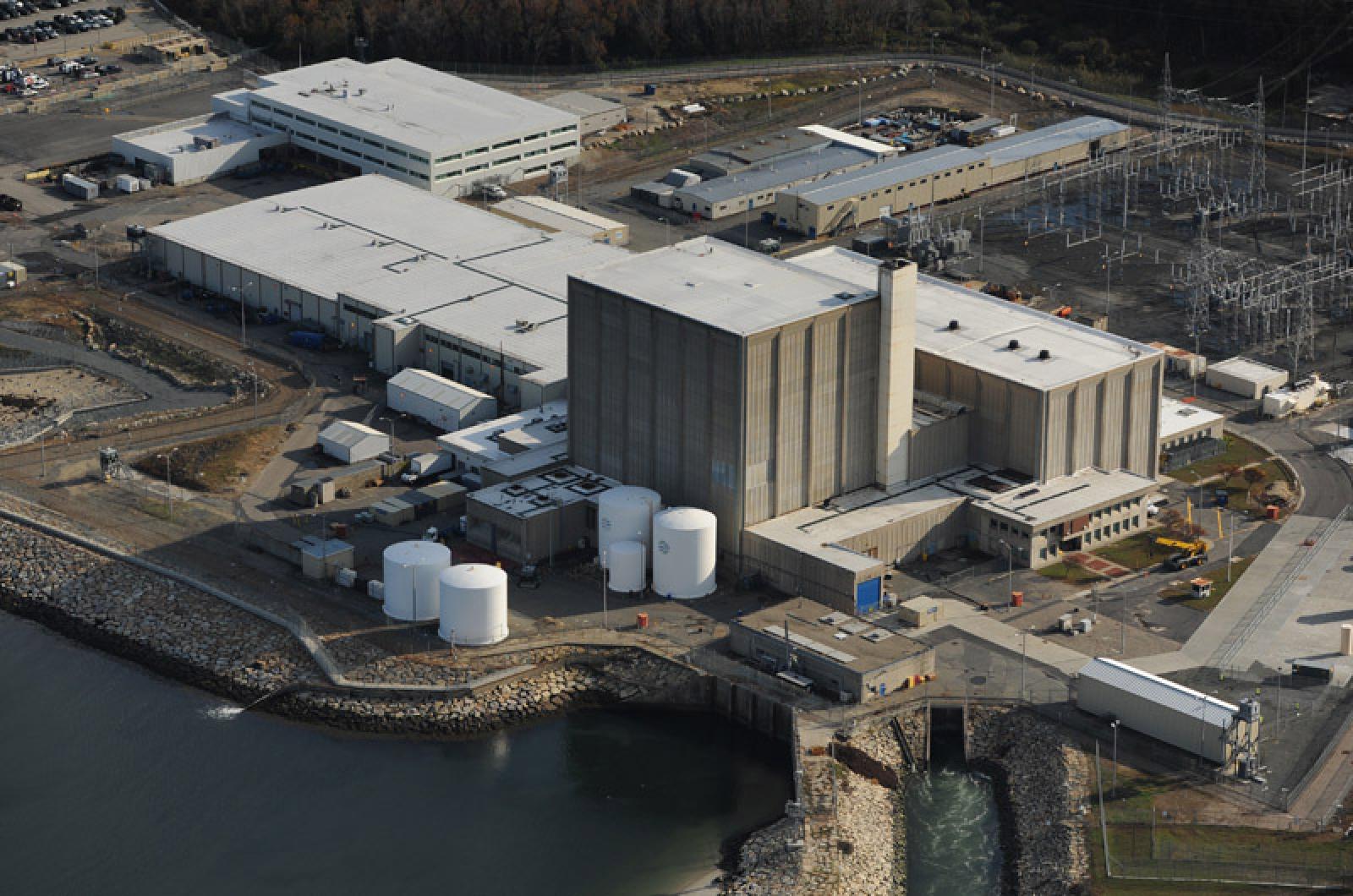Will the NRC ever close Pilgrim? The apparent answer to that overarching question, despite the endless stream of disturbing news that flows from Entergy’s Pilgrim nuclear power station in Plymouth, is no. No matter how many times an inspection or investigation of Pilgrim’s structural and operational problems reveals significant safety issues, the Nuclear Regulatory Commission never deems them sufficient to require the 45-year-old mechanical monstrosity and technological dinosaur to close. But then it has never dropped the hammer on any operating nuclear power station in its 43-year history.
In December 2016, an NRC inspection team concluded that the Pilgrim staff is “overwhelmed,” struggles to keep the plant running, and that malfunctioning equipment doesn’t get properly repaired, among other disturbing findings. In April the NRC agreed to let the station forgo safety upgrades required of other nuclear plants as a result of the catastrophe in Fukushima, Japan in March 2011. Pilgrim is both in age and design a clone of the three Fukushima reactors that melted down there, and continue to release radiation into the air and Pacific Ocean six years later. The litany of problems continues: In mid-May, an NRC quarterly inspection report revealed potentially catastrophic problems with the submerged storage system for the 3,000 highly radioactive and dangerous spent fuel rods, which has degraded. Violations of various reporting requirements were also reported. Most recently, tests on two valves in the high pressure coolant injection system revealed leaks of potential consequence in an accident scenario. It never seems to end.
Of the remaining 99 operating nuclear plants in the country, three are on what’s called the “watch list” of the NRC. These are the plants with sufficient safety issues for the NRC to provide additional oversight, and require remediation of its components. Which plants are on that short, perhaps too short, list? Pilgrim is one, and the other two are in Louisiana, also owned by Entergy. Indian Point’s two reactors, in the heart of the Hudson Estuary in New York, with which I am very familiar, has also been on and off the list in the past, are also owned by Entergy. Since 2000 when the NRC finally began its increased oversight process for troubled reactors, 12 reactors have drawn the NRC’s increased attention. Five of them, as noted, are owned by Entergy. The pattern seems clear.
The rationale for allowing Pilgrim to continue operating largely unchanged, the NRC says, is that the time required for diagnosing, designing and implementing the needed safety upgrades exceeds the time Pilgrim is likely to remain operating, perhaps two more years. What? The plant staff are not comfortable operating the plant as it is, but should continue being uncomfortable? And the five million people living in the vicinity of Pilgrim, should they feel comfortable?
What is the obvious message? To most rational minds these circumstances would more than strongly suggest not allowing the plant to operate for another day, let alone for two years in its clearly unsafe condition. Why not close it now? Instead, the NRC has allowed Entergy to refuel the reactor, and it will be back online shortly, if not already, despite the continuous stream of disturbing revelations about its decrepit condition.
Perhaps the most damning assessment of the overall Pilgrim situation comes from David Lochbaum, longtime director of the Nuclear Safety Project for the Union of Concerned Scientists in Cambridge, which tracks safety problems at all U.S. nuclear facilities. He said recently: “If Pilgrim were an [aged] horse it would have been . . . put down” by now.” I happen to have had contact with Lochbaum about the Indian Point reactors in 2001, after 9/11, and can vouch for the depth of his knowledge and integrity.
So how much more evidence and informed opinion does it take before there is an obvious conclusion that the NRC is being obtuse and obdurate about Pilgrim? Not much. And what explains the NRC’s approach? The answer is grotesquely simple: the NRC’s first priority is securing the economic viability of the nuclear industry, not the safety of the public. It prefers, as in the case of Pilgrim, to maintain a troubled plant as a column four plant on its action matrix, which is the watch category. Column five requires mandatory closure. What does it take to go from column four to column five? No one knows. It’s never happened.
So here we sit, 38 miles downwind of Pilgrim, exposed as we have been since it began operating in 1972, trapped by geography, with no evacuation plan in the event of a major radiation release like Fukushima’s, gathering frequent reports of troubling, if not outright dangerous, conditions at the plant. Which will now be allowed to continue making tons of money, millions per day, for Entergy for at least another two years.
So much for credible regulation by a federal agency supposedly tasked, at least on paper, with protecting the health and safety of the public. Not the bottom line of the industry it’s supposed to regulate. One is not wrong to wonder if this is fixable.
Richard Knabel lives in West Tisbury.





Comments (7)
Comments
Comment policy »